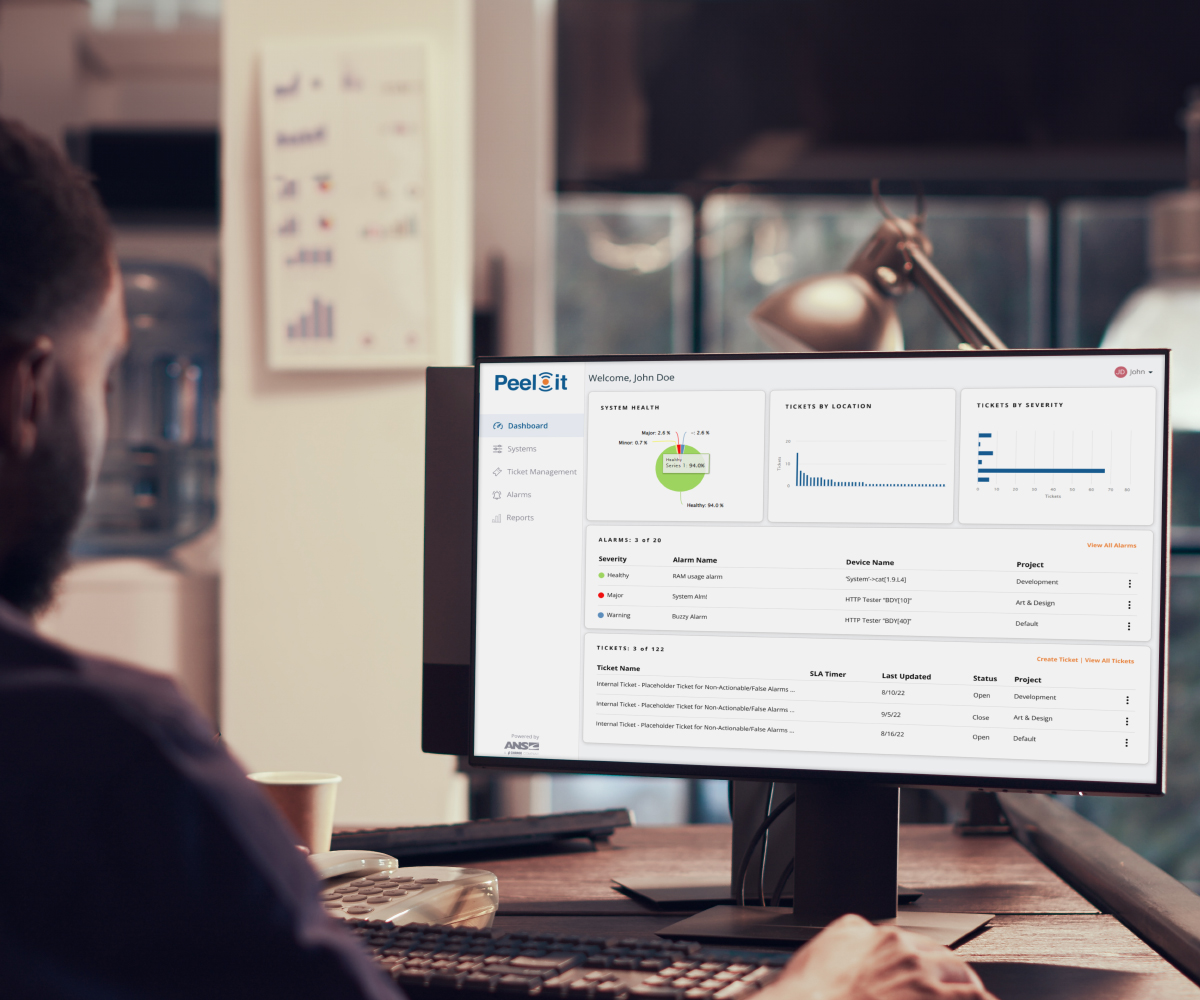In-building wireless (IBW) systems are crucial for ensuring seamless wireless connectivity in areas where external signals may not penetrate effectively due to building materials or structural design.
However, merely installing an IBW system isn't enough. To ensure its optimal performance, ongoing monitoring is vital.
Let’s briefly review in-building wireless systems before delving into the benefits of using intelligent system monitoring software to track these crucial systems.
What are In-Building Wireless Systems?
In-building wireless systems are telecommunications solutions specifically designed to improve or provide mobile connectivity within a building or series of buildings. They are used to ensure strong and consistent wireless coverage inside structures where signals from outside may struggle to penetrate, such as skyscrapers, underground facilities, or buildings with thick walls.
These systems generally consist of a network of devices, including antennas, cabling, and signal boosters that work together to amplify and distribute signals from a mobile network provider throughout the building. This helps to eliminate "dead zones" and ensure that mobile users within the building can enjoy a reliable and robust connection.
There are several types of in-building wireless systems, including:
Cellular Distributed Antenna Systems (DAS) - A cellular DAS is a network of spatially separated antenna nodes connected to a common source that provides wireless service within a geographic area or structure.
Emergency Responder Radio Coverage System (ERRCS) - A specialized in-building wireless system designed to enhance radio frequency signals for emergency services. Its purpose is to ensure reliable communication for first responders like firefighters and police officers within all areas of a building during emergencies.
Small Cells - Small cells are low-powered cellular radio access nodes that operate in licensed and unlicensed spectrum, with a range of up to a few kilometers. They often improve signal strength in densely populated urban areas or large public spaces like stadiums.
Wi-Fi - Provides wireless connectivity to devices like laptops, smartphones, tablets, and IoT devices within a certain range. Wi-Fi can operate on different frequency bands and can support a large number of connections simultaneously.
Repeaters - Repeaters are used to extend the coverage area by receiving a signal, amplifying it, and retransmitting it. They're often used in large buildings or areas where the signal needs to cover a greater distance.
Cellular Boosters - These devices capture and amplify a cellular signal and then broadcast it to an area needing better coverage. They're often used in small offices where cellular service may be weak or non-existent.
Advantages of Monitoring In-Building Wireless Systems
Here are a few benefits of using intelligent remote monitoring and management (RMM) software for in-building wireless systems.
1. Consistent Network Performance
Remote monitoring software provides real-time insights into system health and performance, enabling issues to be identified and addressed promptly before they escalate. This information allows IT teams to make necessary adjustments to ensure the system continues to deliver optimal performance.
2. Predictive Maintenance
Advanced RMM software can analyze data trends and patterns in system performance to predict potential issues before they occur, allowing for preventative maintenance that can prolong the life of the system. This proactive approach to issue identification and resolution also helps minimize downtime, which is crucial for critical applications like emergency responder radio coverage systems.
3. Cost Savings
Using RMM software to monitor and manage IBW systems helps to reduce costs in several ways. It can significantly reduce the need for manual monitoring and on-site visits, saving time and resources, especially for buildings located in remote or hard-to-reach areas. Continuous monitoring will also extend the life of IBW systems, delaying the need for system upgrades or replacements, which can be a major capital expense.
Lastly, RMM software provides comprehensive insights into the performance and utilization of your IBW systems. This can help you make informed decisions about resource allocation, preventing over-provisioning and helping to keep costs down.
Monitor Your In-Building Wireless Systems with Peel-It
Monitoring in-building wireless systems is as important as their installation. It's an investment that organizations across various sectors should adopt to ensure they reap the full benefits of their IBW systems.
Businesses interested in monitoring their in-building wireless systems should request a Peel-It software demo. With Peel-It, you can remotely monitor IBW systems and view critical information such as alarms, tickets, and key performance indicators (KPIs), all from an intuitive, centralized dashboard. By simplifying the process of maintenance and monitoring, Peel-It helps ensure that your in-building wireless systems are always running at peak performance.


